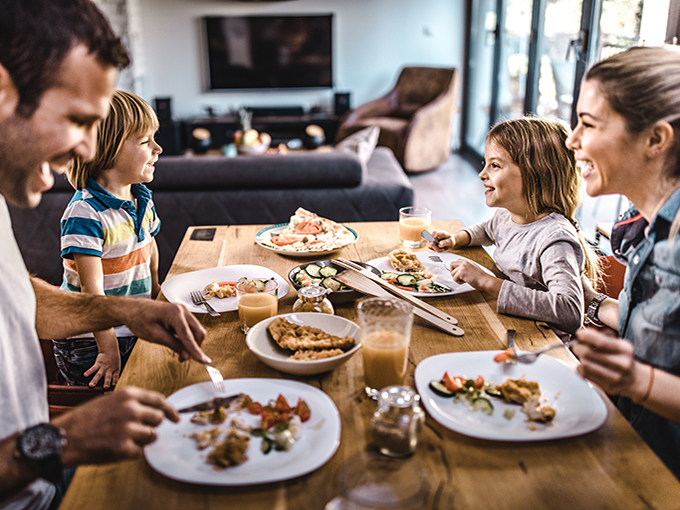By: George Carey
The terrible human toll of COVID-19 notwithstanding, quarantine has been a very good thing for the kids media industry. Ratings are up, viewership is spiking, and co-viewing has never been stronger. Of course, this good news is offset by a decline in advertising revenues.
But for many of our clients, the question we are hearing most is not how to survive the pandemic, but how to turn the short-term audience spikes into permanent viewership gains.
We have been fielding our Passion Points Study, which explores the emotional priorities of parents and kids, for the past 15 years through a number of periods of cultural upheaval. This experience has taught us two important lessons. First, times of massive cultural change have a near-instantaneous impact on the emotional wiring of kids and families. Second, many of the new values, anxieties and priorities that suddenly appear in families’ emotional landscape never go away. They become factors in the choices families make for years to come.
Altered parenting
Much of the industry’s attention to date has been on the pandemic’s effect on children. What has gotten far less attention is COVID-19’s impact on the true arbiters of early childhood content selection: parents.
And the changes are staggering. Just six weeks into the pandemic, half of parents’ primary emotional drivers had undergone massive swings. Dads, for example, are increasingly looking to rebel (tuning into toons rather than the news), while moms are seeking out greater spiritual growth (downloading meditation apps and decluttering their homes).
But a trending Passion Point that is particularly important to the kids media industry is parents’ increasing desire to celebrate and preserve family traditions from their youth—we’re seeing both home cooking and family game nights on the rise. This is remarkable since this desire had been in steady decline since 2015. In fact, many young moms and dads believed that their own parents’ traditions were not something they wanted to replicate. Instead, the growing bias was to create new family traditions.
But COVID-19 has changed that. The values, habits, brands and media properties from parents’ own childhoods are suddenly extremely relevant. Small wonder then that when asked to name the kids shows that are perfectly meeting their needs right now, near the top of the list are Scooby-Doo, Mickey Mouse and Tom and Jerry—all created between 30 and 50 years ago.
For those wishing to maintain their audience growth, the smart money going forward will be on content strategies and marketing that find a place for legacy shows or new properties that take children back to the simpler, more innocent times that parents are suddenly remembering much more fondly.

Prioritizing hope
In addition to triggering enormous changes in the emotional DNA of parents, the pandemic has led to equally significant changes in how families are prioritizing content and platform selection. We have been tracking these priorities over time, watching them ebb and flow through other periods of cultural upheaval. But nothing prepared us for the kinds of changes we are seeing this year. One emotional territory that is quickly trending is parents’ desire for programs and platforms that foster a sense of optimism in an increasingly uncertain world.
The “optimism and hope” content driver consists of five Passion Points, including kids’ self-love, fortitude, emotional health and resilience. Shows that fit the bill include Mickey Mouse Clubhouse, Pinkalicious & Peterrfic and SpongeBob SquarePants, all dyed-in-the-wool optimists. Looking forward, content that gives children the means and motivation to look to a brighter and more positive world will be well received by parents.
Redefining learning
Over the past four years, parents’ educational priorities have been shifting away from traditional curricular learning, with increasing emphasis on teaching “life skills.” The pandemic has accelerated this trend.
Within the broad “life skills” territory, one educational Passion Point is showing particularly high relevance right now: teaching kids “character and kindness.”
When asked to name their number-one parenting priority, for years the most frequent answer has been “raising someone who will be a good person.” This has never been more on parents’ minds than it is today. They are particularly frustrated and deeply disturbed by the chronic lying, selfishness and materialism of the people and institutions that used to be role models for their kids. Parents feel they are on their own to establish important principles (such as emphasizing that there is no grey area between a truth and a lie), and they are looking for someone or something to model these behaviors for them.
While most moms and dads will be quick to tell you that the most important teachers of these values are parents themselves, they have never been more receptive to content that reinforces these principles and beliefs. Given adults’ growing skepticism about the character and integrity of many of the public and private institutions populating their world, it is a safe bet that their desire for content that models and promotes sound character development—including honesty, reciprocity and empathy—will only increase.
The pandemic will end, and when it does, the quarantine tethering children to their TVs, tablets and devices will be lifted. But what won’t vanish are the new values and emotional priorities COVID-19 has seared on parents’ collective consciousness. The seeds of emotionally relevant platforms, programs and properties are already evident. Understanding and actioning them now will go a long way towards ensuring that the surges in your audience today are not a temporary aberration, but the beginning of a long-term pattern of normalized behavior you can count on for years to come.
Fielded in April with 2,000 parents of kids two to 12, this is the first wave of the 2020 Passion Point Study, which quantifies the emotional drivers of consumer decision-making among 30,000 kids, teens and parents in every major market around the world.






















